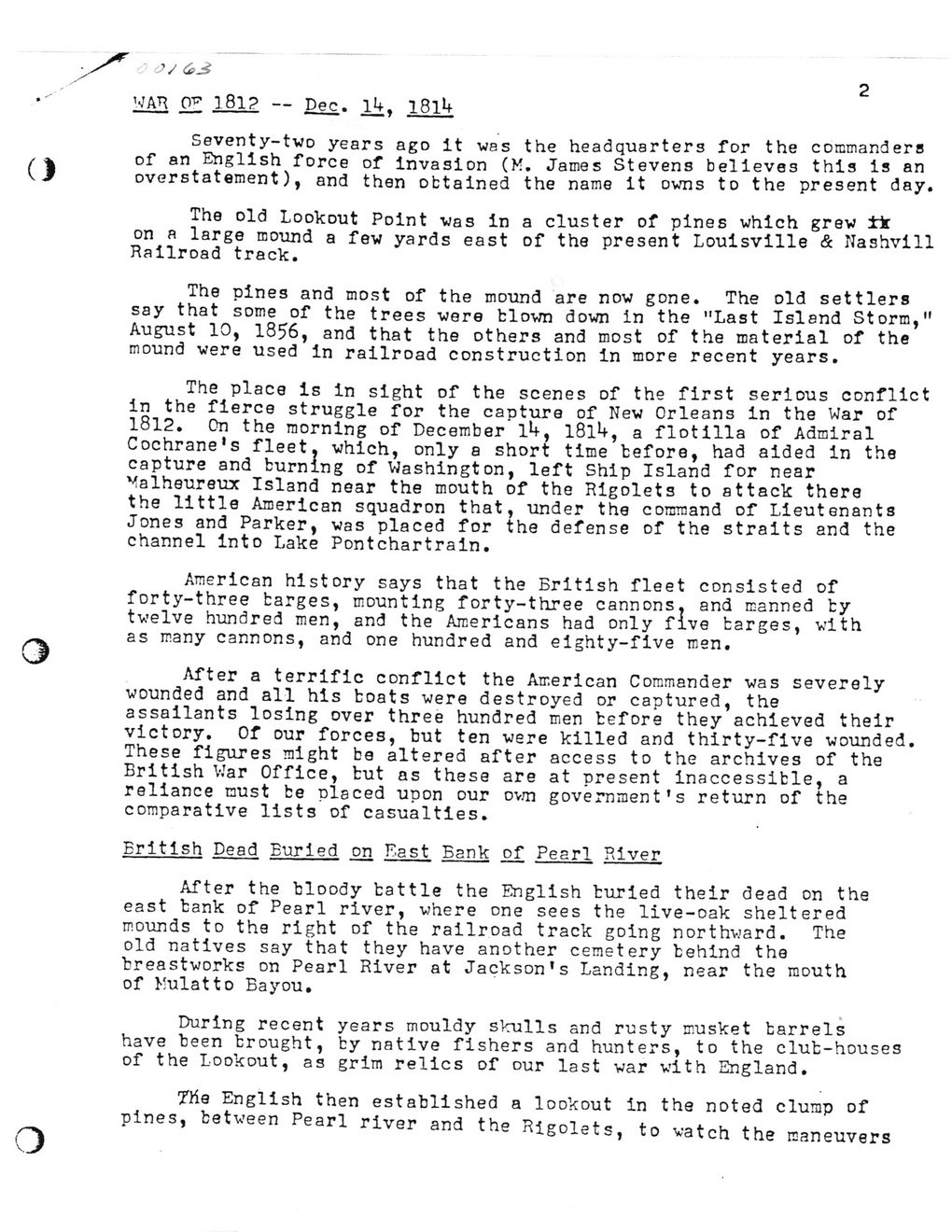This text was obtained via automated optical character recognition.
It has not been edited and may therefore contain several errors.
Seventy-tvo years ago it was the headquarters for the commanders of an English force of invasion (M. James Stevens believes this is an overstatement), and then obtained the name it owns to the present day. The old Lookout Point was in a cluster of pines which grew Hr on a large mound a few yards east of the present Louisville & Nashvill Railroad track. The pines and most of the mound are now gone. The old settlers say that some of the trees were blown down in the "Last Island Storm," August 10, 1856, and that the others and most of the material of the mound were used in railroad construction in more recent years. The place is in sight of the scenes of the first serious conflict in the fierce struggle for the capture of New Orleans in the War of 1812. On the morning of December 1*+, I81U, a flotilla of Admiral Cochrane’s fleet, which, only a short time before, had aided in the capture and burning of Washington, left Ship Island for near Malheureux Island near the mouth of the Rigolets to attack there the little American squadron that, under the command of Lieutenants Jones and Parker, was placed for the defense of the straits and the channel into Lake Pontchartrain. American history says that the British fleet consisted of forty-three barges, mounting forty-three cannons, and manned by twelve hundred men, and the Americans had only five barges, with as many cannons, and one hundred and eighty-five men. After a terrific conflict the American Commander was severely wounded and all his boats were destroyed or captured, the assailants losing over three hundred men before they achieved their victory. Of our forces, but ten were killed and thirty-five wounded. These figures might be altered after access to the archives of the British War Office, but as these are at present inaccessible, a reliance must be placed upon our own government's return of the comparative lists of casualties. British Dead Burled on East Bank of Pearl River After the bloody battle the English buried their dead on the east bank of Pearl river, where one sees the live-oak sheltered mounds to the right of the railroad track going northward. The old natives say that they have another cemetery behind the breastworks on Pearl River at Jackson’s Landing, near the mouth of Mulatto Bayou. During recent years mouldy skulls and rusty musket barrels have been brought, by native fishers and hunters, to the club-houses of the Lookout, as grim relics of our last war with England. 7Jie English then established a lookout in the noted clump of pines, between Pearl river and the Rigolets, to watch the maneuvers

Pearlington Katrina Document (042)